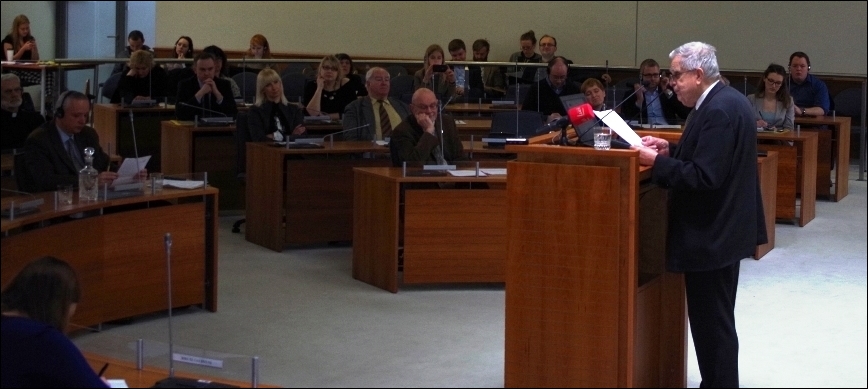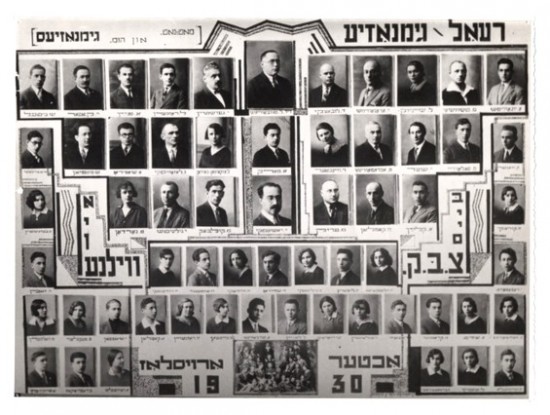◊
This small book, brought out in three separate editions (English, Lithuanian, Russian) by the state-supported Genocide Center, looks more like a brochure than anything else. The cover features the author’s name, in small type, above all else, then a larger Kaunas Ghetto, then a line with the years 1941-1944, against a backdrop of a computerized dark blue sky above a “tasteful” black-and-white picture of Jews lined up in columns inside Kaunas ghetto. The computerized dark blue wraps around the spine to the back cover where some vague lines comprise a hand-drawn map of the streets making up Kaunas ghetto, an ISBN number in white above UPC Bookland barcode featuring the same number again, and then a web address, www.genocid.lt. I found myself staring at the internet address and wondering what language that was supposed to be. Lithuanian is always “genocidas” and “genocid” isn’t possible as any permutation or declension of the noun, and of course English is “genocide.” Perhaps it’s Russian in Latin-letter transcription? But that would contradict the nationalist and ethnic bias of the publisher, the Center for the Study of the Genocide and Resistance of Lithuanian Residents where Arūnas Bubnys is a leading figure. Perhaps “genocid” is someone’s notion of a non-English and yet international form of the word, formed by reducing it from the Lithuanian nominative case ending -as? I checked my favorite search engine, and of course the Lithuanian organization’s webpage came up first, but was soon followed by a wikipedia and wiktionary entry for the Croatian word.
Continue reading


